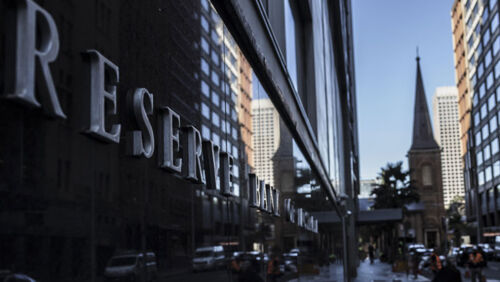Reserve Bank lifts cash rate to 3.85% at May 2023 meeting
By Tom Watson
After a month's reprieve the Reserve Bank Board has returned to rate-hiking mode, lifting interest rates by 25 basis points at its May meeting.
The increase, from 3.60% to 3.85%, means that the official cash rate is now the highest it's been since April 2012.
Like last month's decision to hold rates, the outcome of today's meeting was expected to be close, with 23 of the 42 economists and experts polled by comparison website Finder before the meeting anticipating a hike and 19 expecting another pause.
But with inflation data released by the Australian Bureau of Statistics last week revealing that the Consumer Price Index (CPI) had risen 7% over the year to March - well above the RBA's inflation target of 2-3% - the board ultimately agreed to act.
"Inflation in Australia has passed its peak, but at 7% is still too high and it will be some time yet before it is back in the target range," Reserve Bank governor, Philip Lowe, commented in his post-meeting statement.
"The Board held interest rates steady last month to provide additional time to assess the state of the economy and the outlook.
"While the recent data showed a welcome decline in inflation, the central forecast remains that it takes a couple of years before inflation returns to the top of the target range; inflation is expected to be 4.5% in 2023 and 3% in mid-2025."
Looking ahead, there's more of a consensus on the direction of the central bank's next move, with 76% of those same experts polled by Finder expecting the RBA to stay its hand when it meets on June 6.
Whether that sentiment proves correct obviously won't be known for a month, but Lowe and the board appear to be remaining open to all courses of action.
"Some further tightening of monetary policy may be required to ensure that inflation returns to target in a reasonable timeframe, but that will depend upon how the economy and inflation evolve."
Mortgage stress levels highest in decade
For Australian homeowners with a mortgage the relief that came with last month's rate pause will likely be replaced with a sense of the inevitable as they wait for lenders to pass on today's increase.
It's a feeling many will have become familiar with since the Reserve Bank made the first of its 11 recent rate hikes back in May 2022, during which time the official cash rate has jumped from 0.10% to 3.85% and mortgage repayments have soared.
"Australians with an average loan size of $586,000 will be forking out around $14,000 more per year compared to what they were paying this time last year," explains Graham Cooke, head of consumer research at Finder.
Rise in mortgage repayments
Given the steep increase in repayment obligations, it's hardly a surprise then that more Australian borrowers are finding themselves struggling with their mortgages.
In the three months to March, 1.35 million mortgage holders (27.1% of the total share) were deemed to be at risk of mortgage stress according to research released by Roy Morgan last week.
For context, that's the highest number of borrowers recorded by Roy Morgan since the height of the Global Financial Crisis (GFC) in 2008 when there were 1.37 million in stress, and the largest proportion of overall borrowers since 2011.
And with today's 25 basis point rate hike set to flow on to borrowers in the coming weeks, Roy Morgan is expecting the number of mortgage holders in stress to increase to a record 1.52 million.
Get stories like this in our newsletters.



